Understanding Horizontal Machining Centers: Structure, Benefits, and Product Series #
A horizontal machining center (HMC) is a type of CNC machine tool designed for multi-purpose operations, with its main spindle axis oriented parallel to the worktable and the floor. This configuration enhances chip removal, as chips naturally fall away from the work area, reducing manual intervention and improving operational efficiency. HMCs are often equipped with two pallet changers, enabling unattended production and minimizing part cycle times.
Key Advantages of Millstar Horizontal Machining Centers #
- Efficient Multi-Operation Capability: Millstar HMCs allow multiple machining operations in a single setup, making them ideal for large-scale, high-speed production environments.
- Robust Design and Versatility: The horizontal machining center series features highly rigid designs, with table sizes ranging from 630mm to 1000mm. This durability reduces wear and tear, lowers maintenance costs, and increases reliability. Single-table models are also available, offering larger table sizes and higher load capacities for heavy-duty industries, accommodating a wide variety of part shapes.
- Automatic Pallet Changer (APC) in JMH Series: The JMH series is equipped with an APC, allowing components to be loaded onto a pallet while the machine is cutting. After the cutting cycle, the pallet is automatically and quickly transferred, minimizing downtime and increasing spindle utilization while reducing operator workload.
- Broad Industrial Applications: Millstar HMCs are widely used in industries such as automotive, power generation, hardware, and oil & gas, thanks to their high processing capability and reliability.
As a professional CNC machining center manufacturer, we focus on innovation and refined design, continuously enhancing product modularization and automation to improve productivity and precision. Our goal is to provide customers with cost-effective solutions tailored to their needs.
For more information about our horizontal machining centers or horizontal milling machines, please contact us.
Frequently Asked Questions About Horizontal Machining Centers #
Q1: How does a horizontal machining center work?
Horizontal machining centers typically feature a vertical axis for spindle height adjustment and two horizontal axes for table movement. Once the workpiece is clamped, the CNC system controls tool selection, spindle speed, and the movement of the X, Y, and Z axes, enabling multi-angle cutting. This setup is well-suited for projects requiring side or multi-surface machining, delivering high-speed and high-precision results.
Q2: How do I choose the right size for a horizontal machining center?
Selection depends on the shape, size, complexity, and material of the parts you intend to manufacture. Consider your specific production requirements when choosing a model.
Q3: What materials can be processed with a horizontal machining center?
HMCs can handle a wide range of materials, including metals (steel, aluminum, copper, brass, titanium, nickel alloys), composites for aerospace and automotive applications, and ceramics for medical and dental industries. The machinability depends on spindle speed, tooling, and cutting parameters.
Q4: Do you offer after-sales services?
Yes, we provide comprehensive after-sales support, including troubleshooting, parts replacement, and maintenance. Our service team is available to assist customers as needed.
Comparing Horizontal and Vertical Machining Centers #
| Horizontal Machining Center (HMC) | Vertical Machining Center (VMC) |
|---|---|
| Advantages | Advantages |
| 1. Suitable for multi-sided machining. | 1. Occupies less space, ideal for small factories. |
| 2. Handles large, heavy workpieces. | 2. Easy setup and quick installation. |
| 3. Stable cutting due to tool/spindle. | 3. Economical for small workpieces. |
| 4. Rotating worktable for multi-angles | 4. Excellent for high-precision processes. |
| Disadvantages | Disadvantages |
| 1. Requires more floor space. | 1. Not suitable for large/heavy workpieces. |
| 2. More complex setup and operation. | 2. Challenging for very large parts. |
| 3. Tool/spindle maintenance is complex | 3. Limited for multi-angle machining. |
| Applications | Applications |
| - Aerospace, automotive, mold making | - Electronics, medical, small components |
| - High-precision, multi-sided tasks | - High precision and surface finish |
Product Series Overview #
JMH Series (with 2 Pallets) #
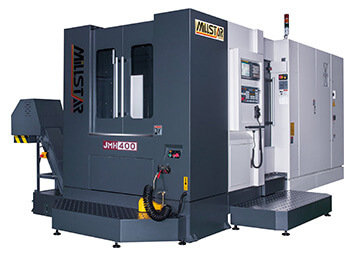 JMH400 (BT40) X630 / Y630 / Z630
JMH400 (BT40) X630 / Y630 / Z630
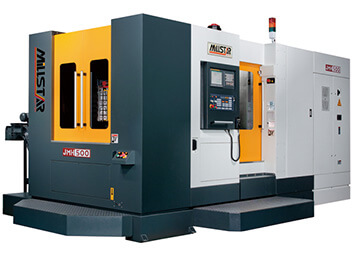 JMH500 (BT40/BT50) X800 / Y725 / Z725
JMH500 (BT40/BT50) X800 / Y725 / Z725
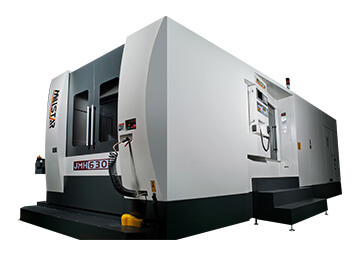 JMH630 (BT50) X1020 / Y850 / Z890
JMH630 (BT50) X1020 / Y850 / Z890
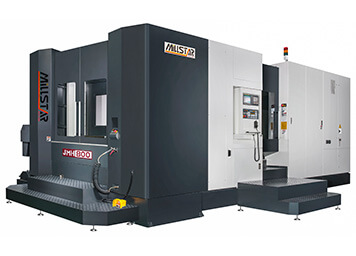 JMH800 (BT50) X1270 / Y1050 / Z1050
JMH800 (BT50) X1270 / Y1050 / Z1050
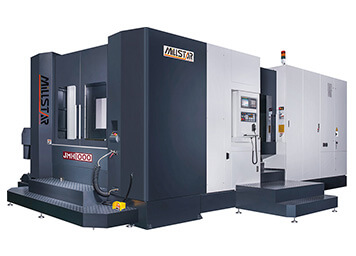 JMH1000 (BT50) X1530 / Y1250 / Z1200
JMH1000 (BT50) X1530 / Y1250 / Z1200
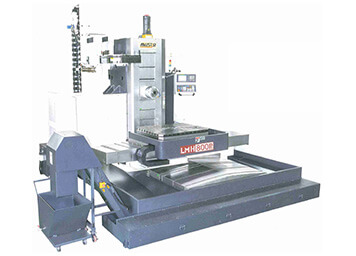 LMH800 (BT50) X1270 / Y1250 / Z1050
LMH800 (BT50) X1270 / Y1250 / Z1050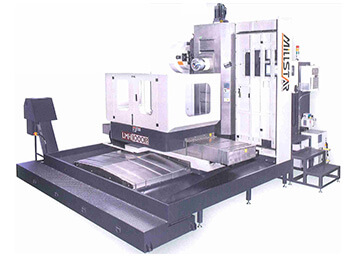 LMH1000 (BT50) X1530 / Y1250 / Z1250
LMH1000 (BT50) X1530 / Y1250 / Z1250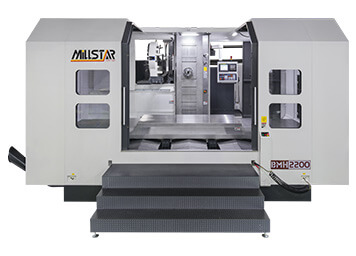 BMH2200 (BT50) X2200 / Y1250 / Z1250
BMH2200 (BT50) X2200 / Y1250 / Z1250